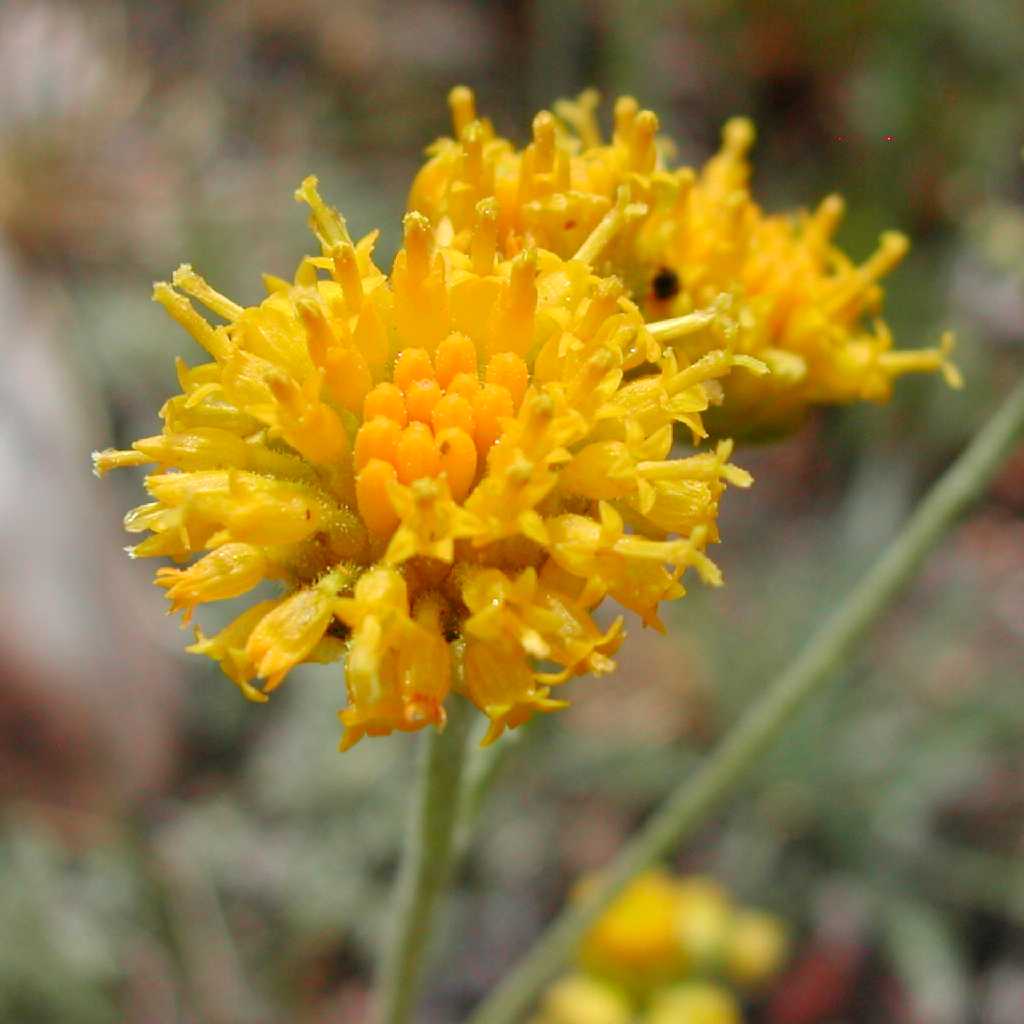
|
Family: Asteraceae |
Biennials or perennials, to 120 cm. Stems erect, often scapiform (1 stem per crown in biennials, usually 3+ in perennials). Leaves mostly basal or basal and cauline; alternate; petiolate; blades usually 1-2+ times pinnately lobed (lobes usually ± filiform), ultimate margins usually entire, rarely toothed, faces glabrous or hairy, often tomentose, usually gland-dotted as well. Heads radiate or discoid, in ± corymbiform arrays. Involucres obconic to hemispheric, 4-15+ mm diam. Phyllaries 5-13+ in 2-3+ series, subequal, usually membranous- or scarious-margined (often yellowish, whitish, or purplish). Receptacles flat or convex, epaleate (except H. newberryi). Ray florets 0 or 8, pistillate, fertile; corollas white to ochroleucous. Disc florets 12-70+, bisexual, fertile; corollas usually yellow to ochroleucous or whitish to purplish, tubes longer than or about equaling funnelform or abruptly dilated, campanulate throats, lobes 5 (reflexed at anthesis). Cypselae obpyramidal (4-, sometimes 5-angled, each face usually 1-4-ribbed, glabrous or hirtellous to villous); pappi 0 or of 12-22 orbiculate to spatulate scales. x = 17. My treatment of Hymenopappus is essentially an adaptation of that by B. L. Turner (1956).
Heads mostly discoid; invol bracts appressed, in 2-3 equal series, at least the inner with broad, obtuse, scarious, somewhat petaloid, yellowish or whitish tip, ±herbaceous below; receptacle small, naked; disk-fls perfect, the cor yellow or whitish, with campanulate 4-5-lobed throat, the lobes mostly ovate; style-branches flattened, with very short, minutely hairy appendage; achenes ca 15-20-nerved and 4-5-angled; pappus of 12-20 membranous or hyaline small scales, or rarely wanting; herbs with alternate, pinnatifid lvs and several or many small or middle-sized, hemispheric or campanulate heads. 10, N. Amer. Gleason, Henry A. & Cronquist, Arthur J. 1991. Manual of vascular plants of northeastern United States and adjacent Canada. lxxv + 910 pp. ©The New York Botanical Garden. All rights reserved. Used by permission. |
This project was made possible in part by the Institute of Museum and Library Services [MG-70-19-0057-19].
Powered by Symbiota



